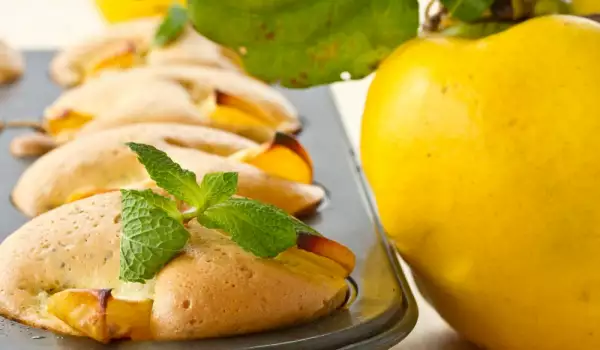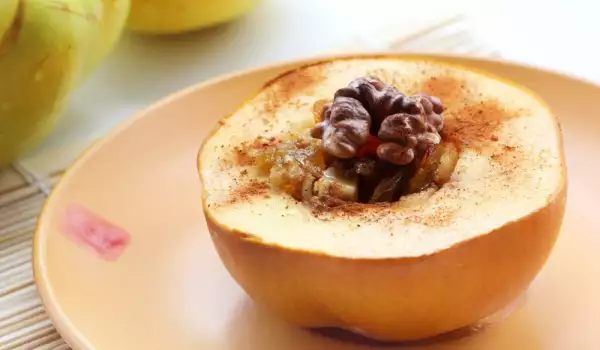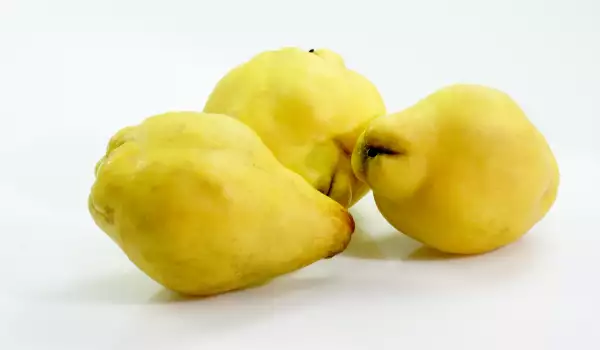Quince is believed to have originated in Iran. Its botanical name is Cydonia oblonga, from the region of Crete.
Cultivation of quince is common in South-Eastern Europe, growing there even before apple. Researchers say people around 1000 BC in Palestine were familiar with quinces. The lovely little twisted quince tree bears fruits, which are different size, color and shape.
Quince trees are widespread in Greece, New Zealand, Argentina and France. They became popular in North America. In the early twentieth century, quince cannery developed too.
Quince is a fruit like pear or apple. To make it palatable, it should be golden in color to yellow with reddish spots. Commonly, quinces look big and formless. Their skin may be covered with moss or be smooth. The characteristic of all quinces flavor, however, is exceptional.
The flavor of each variety has different shades of musk and wild tropical fruit-like perfume. Astringent and sour, quince can’t be eaten raw and cooking is required for it to be edible. Once cooked, quince gets a beautiful color, like toffee.
Season for quinces is late fall, but can be found throughout the year.
Quince plays an important role in the culinary world. It is popular in Moroccan, Persian, Romanian, and all Balkan cuisine. Adding quinces to stews with meat or adding them to roasted meats is extremely common.
Called "melimelum" by the Romans, it’s Greek name means "honey apple" because the fruit was put in honey for making jams. Portuguese quince-trees are called "marmelo" and make great jam. Greeks give it the name "Cydonia", which became "cotogna" in Italy and "coing" in France.

Biggest fans of quince, however, remained the Turks.
History of quinces
During the reign of the great King Solomon, there was a special law that couples had to eat a quince on the day of her wedding to have a happy married life. The famous golden apple from Paris, given as a gift to the goddess Aphrodite, according to some sources is not an apple, but a quince. It has been shown that at this time Troy `had not grown apples, leading historians to believe that it was the quince that was a "bone of contention" between the three most beautiful goddesses - Aphrodite, Hera and Athena.
In one of his epigrams, Martial mentions quinces with honey, which are prepared by the nymphs themselves. They served to entertain an infuriated young Zeus.
Composition of Quinces
Quince fruits have a very high content of pectin, which also has good gelling properties. Quinces contain high amounts of fiber - 1.55%, and their tannins are at 0.57%. These substances impart quince’s astringent taste and largely limit its consumption fresh. Quinces are high in vitamin C and niacin, calcium, phosphorus, magnesium and sodium. In the quince has small amounts of manganese, copper and cobalt.
100 grams of quince contains 57 calories, 4 mg sodium, 15 g carbohydrate, 2 g fiber, 1% vitamin A, 25% vitamin C, 1% calcium and 4% iron.
Quince varieties
Mainly four different types of quinces exist:
- Asenic – Quinces are medium large, have a smomth surface and apple shape. They ripen in October, and the fruits have a great taste;
- Triumph - a medium large variety of quinces, which are pear-shaped and have a good taste;
- Hemus - variety of asymmetric or apple shaped quinces. Their flesh is yellow, fragrant and slightly acidic;
- Trimontium - a variety of quince with small fruits and not with a very pleasant taste, so they are not recommended for consumption.
Selection and storage of quinces
Choose quinces that are firm, yellow and large, with no soft areas. Quince can be stored at room temperature up to one week. In the cold, or when refrigerated, the fruit may be preserved for a long time.

Quinces in cooking
Quinces have a strong pungent taste, which is why they are hardly eaten fresh. Containing a large amount of pectin, quince is suitable for making jam and jelly. Quinces are also used for making sauces or eaten roasted. In addition to being on their own, they are used for making desserts and in combination with apples and pears. They are an extremely flavorful ingredient in cooking pie or pudding. Because they have strong, capable of melting texture, Quinces require longer cooking time.
Quince can be baked whole and served with walnuts, honey and dried fruit. There are many recipes for cooking pork or veal with quinces. It is very important not to remove the skin, because in it lies the wonderful aroma of this fruit.
Quince is a component of some of the most prestigious white wines in the world - Chardonnay and Sauvignon Blanc. Christmas decorations will also be very fragrant and cozy if, among the other fruits in bowl, you add a few quinces.
Benefits of Quinces
Rich in fiber, quinces contain moderate amounts of vitamin C and potassium. Four ounces of uncooked fruits contain about 65 calories. Daily consumption of quince reduces the likelihood of cancer. A recent study found that eating quince is effective for lowering blood pressure. It is known that Quince helps with hangovers. Ancient healers discovered the unusual effects of the yellow fruit too. Quince helps with palpitations, stomach problems, nausea, vomiting and jaundice.
Quinces are anti-inflammatory due to the combination of tannin and pectin in them. They are also used for general strengthening of the body, and as a remedy for diseases of the intestines and stomach. Quince is useful in cardiovascular disease. The fruit is very palatable for diseases of the respiratory tract, liver and lungs.
Quince juice has a strong bactericidal effect. They are used in inflammatory problems in the oral cavity and externally - for ulcers and wounds.

Traditional medicine with quinces
In folk medicine, they widely use not only fruit, but the leaves and seeds of the quince. From its seeds are prepared potions against coughs. From the leaves of a quince, you can make tincture, which is used to lower cholesterol and blood pressure





















